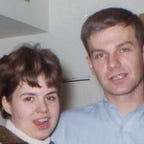Perishing Pershing
Paris is a city of monuments. From the Arc de Triomphe to the plaque on a building down the street, there is a monument for everything and everyone.
And Paris cherishes its monuments and the history that goes with them. It cares for them (the Eiffel Tower is soon to be enclosed in a large bullet-proof glass case to protect it from terrorist attacks) and promotes them, not only because they bring tourists and their wallets to the city, but also because the French believe in what one mayor called "the duty of memory."
That duty, however, seems to have totally bypassed one Paris monument: Stade Pershing, or Pershing Stadium, the stadium American General John "Black Jack" Pershing built in 1918–19 at the end of World War I.
It was designed for a variety of sports but especially for baseball. "It really is a hallowed place in the history of baseball," said Jim Gates, chief librarian for the Baseball Hall of Fame in Cooperstown, NY.
Hallowed maybe, but today it is a sad and decrepit shadow of itself, sitting forlornly in the Bois de Vincennes on the eastern side of Paris as though waiting for someone to wave a magic wand to reawaken it. We first got to know Pershing when Don began playing there with the Paris Patriots. He had been excited to play at such an historic venue, but that turned to dismay when we saw the stadium.
Like most parks and sport facilities in France, it is now owned directly by the city.
It began life as a totally modern multi-sports complex built by the express order of Pershing, the commander of the American Expeditionary Forces in World War I.
In those days at the end of the Great War, it teemed with soldiers from all the countries which had banded together to defeat Germany and her allies.
They worked with the YMCA and volunteers to help build it and pitched their tent camps all around it. Pershing was determined to keep the US doughboys and other military men "fighting fit" and, at the same time, head off another enemy: boredom.
To that end, Pershing dreamed up the "Inter-Allied Games," a sort of mini-Olympics that featured 19 different sports, everything from swimming and wrestling to golf and rugby.
Pershing envisioned the Games with several military-type competitions, but only two made the cut: shooting and grenade-throwing. (For more about how grenade-throwing kept baseball alive in France, see "Pitching Grenades: French Baseball History Part 5 in the Baseball History section of this publication.)
Baseball games, however, were the main attraction. They drew as many as 25,000 fans.
When the Inter-Allied Games were over (the US came out on top) and the War finally ended, the United States gave the complex to France which originally had donated the land.
Poor Pershing began to decline almost immediately. Some rugby matches were played there along with the odd soccer match or two and the occasional baseball pick-up game.
But by 1922, it had deteriorated so much that the committee choosing venues for the 1924 Olympic Games in Paris — the Games made famous in the film Chariots of Fire — refused to even consider it, even for baseball. Finally, however, because of its historical standing, the committee agreed to stage some of the rugby matches there.
In 1960, the original structure was torn down and replaced with another multi-sports complex used by one of the French sports academies, so baseball continued to be played there. Then the academy dropped baseball, and Stade Pershing began to stagnate, becoming the stepchild of the Paris sports bureau.
None of which deters the intrepid and committed baseball players of Paris who breathe life into the old diamond every weekend.
Pershing is now the home field for the Paris University Club (PUC) team which plays in Division 1, the top league in France. It is home as well to the three other adult teams PUC fields, as well as to the teams of the Paris Patriots Baseball Club.
They scramble for playing time and practice time at the antiquated site and cross their fingers that they get it. Otherwise they are relegated to Mortemart, an even worse diamond on the grounds.
The City of Paris does the bare minimum to maintain it, thanks in part to a prickly relationship between the city's sports department and the long-time president of PUC.
Some improvements were made when PUC hosted a national baseball competition a couple of years ago, but those improvements were almost a step back, as the photos show. The re-done bleachers began to warp and sag before the first pitch was thrown. They had to be blocked off and temporary ones brought in for the tournament.
Now there's no place for fans to sit unless they bring their own chairs. Then their view is blocked by the new green protective layer add to the bottom of the screen.
If 25,000 once watched games here, today it’s a surprise if 25 show up.
There's no regular food concession and toilet facilities are in buildings several hundred meters away. And they're not lovely or fragrant!
We make the trek out to Pershing every now and then to get our fix of live baseball.
Pictured above, the monument at Pershing to athletes who died in World War I
And to say "hello" to the ghost of "Black Jack" Pershing and all the brave young men who fought hard for freedom and then played equally hard here in a game they loved.
